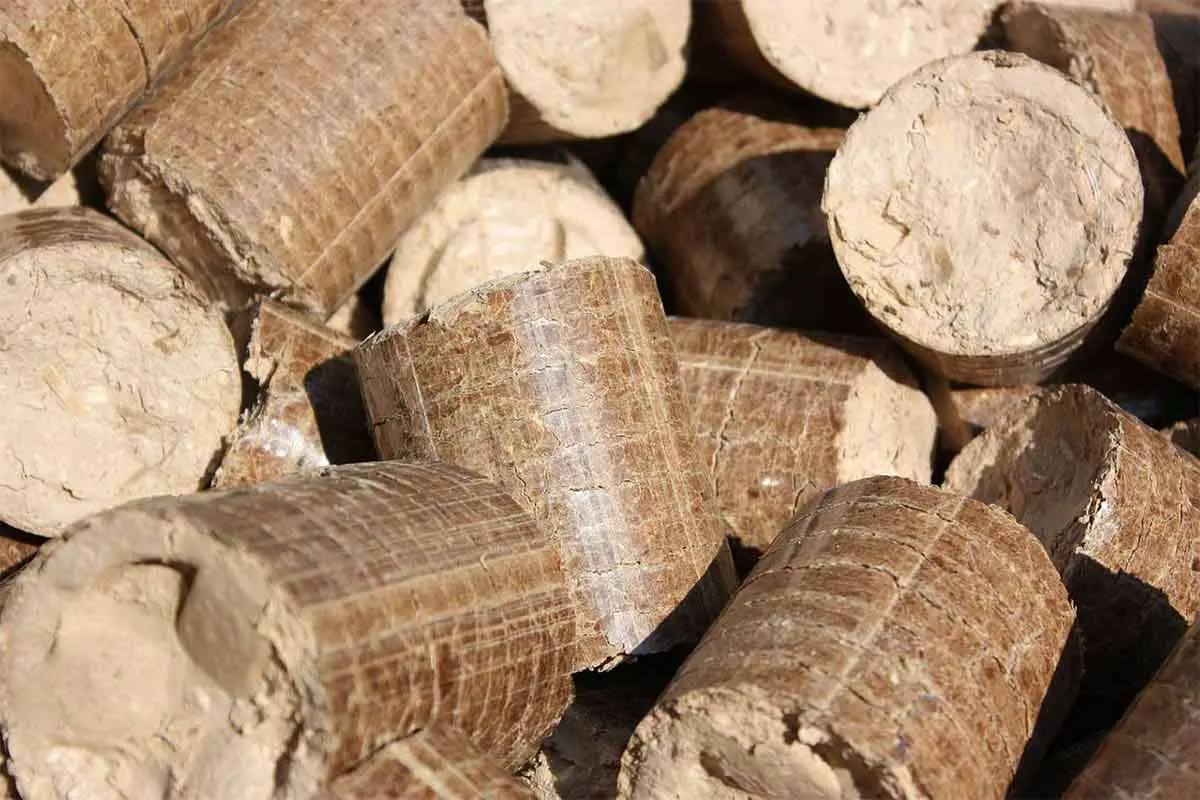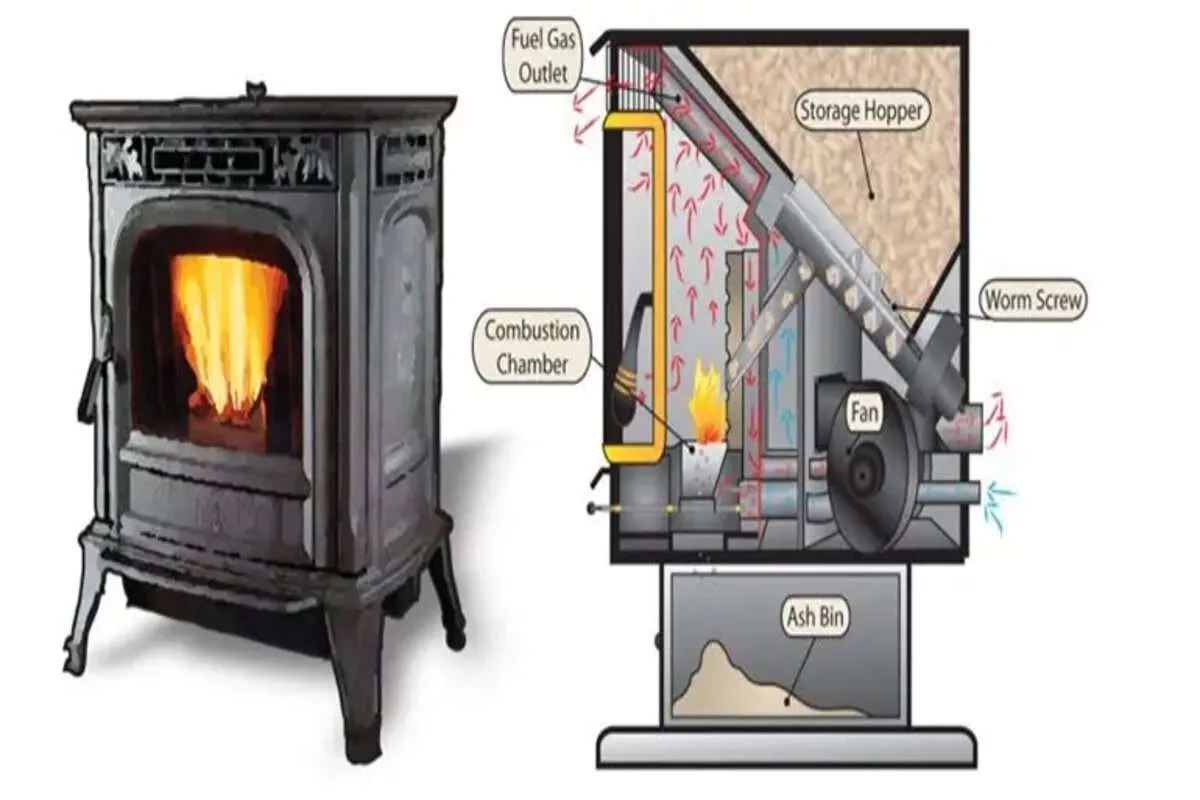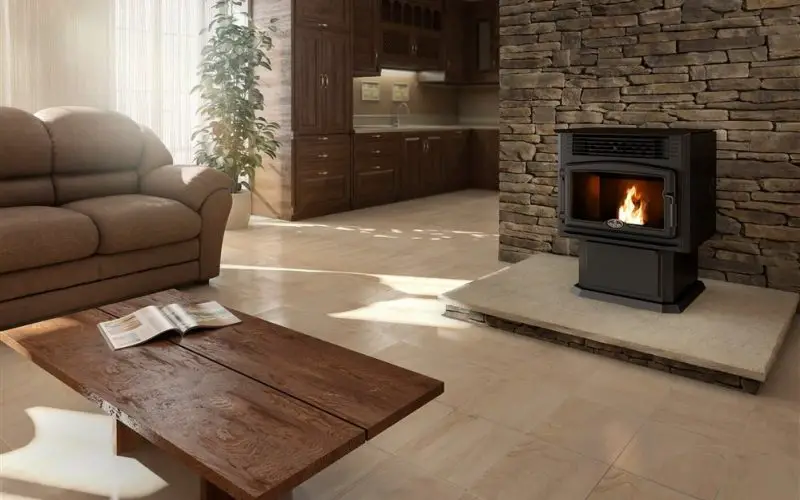Table of Contents Show
[Updated: 1st November 2022]
What are Pellet Stoves?
Pellet stove is an eco-friendly fill in for traditional fireplaces. It works as a modern electric appliance, which is not only great for the environment, but also provides convenience and cost-effectiveness.
Gathering, chopping, and storing wood for fires is always difficult for families to keep houses warm during winters.
Pellet stoves solve the hassle of setting up a fire and then putting it out. When it is not required, when going to bed or leaving the house, just flick the switch! Leaving behind the days when you would rely on low-efficiency wood heaters to survive cold nights.
The smoke that evolves from burning wood in traditional heaters can cause various health effects, especially on the people sitting around the fire.
Also, that smoke produces Air pollution that has dangerous effects on surrounding population and the ecosystem.
These pellet stoves have been built to remove all these burdens and harshness of a traditional fireplace.
And it works exactly the same way as a traditional existing fireplace should!
Trust me you won’t notice a difference!
What are the pellets in pellet stoves made of?

Pellets, used as solid fuel for pellet stoves, are made from biomass and other organic materials such as sawdust, wood chips, scrapings and bark.
It also has waste by-products of timber and lumber industry mixed in.
Softwood produced by growing poplar trees can specifically be used for pellet production.
Corn Stalks and sugarcane shavings can be used as well.
How are Pellets made?
These wood by-products are run over by a hammer mill.
The high pressure grounds them and presses them together into uniform size, shape and density.
The high pressure increases temperature inside pressed wood pellet and forms a semi-solid consistency (like chalk).
As the pressure is lifted off and the semi-solid mixture of biomass is allowed to cool; the water content in pellets decreases and the compressed pellets start to harden.
Wood pellets are clean-burning and can be used in a wood burning stove! Just like the one below!
The loss of moisture from pellets is really important!
The low moisture content of pellets allows for longer burning life of pellets. This lets it generate heat slowly for a long period of time with minimal emissions.
The small size and uniform consistency makes it easy for the auger to transport pellets from the hopper to the pot for continuous supply of green heat.
The terms auger, pot and hopper have been explained ahead.
Today we will look at how pellet stoves operate, their types, and their many advantages and disadvantages ahead.
The Principles of How Pellet Stoves Work

The pellet stoves require electricity for them to be operational, unlike a traditional wood stove.
The inside of the stove consists of a long screw termed as the auger which is concerned with getting the pellets to the pot from the hopper, which is loaded with pellets, so they burn with utmost efficiency.
The auger is a motorized device which helps in determining the temperature of the pellet stove. When higher temperatures are required; the burn pot has to generate a much hotter flame by creating a low pressure/high density environment inside for the pellets.
The burn pot then causes the air and wood pellet fuel to mix to initiate the burning process and to cause combustion.
The burnt pellets then are converted into ashes and dropped into the ash pot, which may require regular cleaning for maintenance.
Types of Pellet Stoves available
There are three types of pellet heaters available on the markets! I’ve also given some examples from Amazon here.
The first type of wood pellet stove consists of manual loading of pellets which is perfect for some extra heating on a cold winter night.
The second is the boiler which has automatic loading available and can be used as the main source of heating for the building.
The last is the stove-boiler combination; not only does it heat the room where you place it, but it can also heat multiple radiators located remotely.
Here’s an example of one of the high-end indoor heating pellet stoves on the market today:
The Advantages of using a Pellet Stove
1. User-friendly and Easy Maintenance
One of the major advantages of wood pellet stoves is that they consist of automatic ignition and power modulation, making it very easy for people to use.
There is constant improvement in the technology being used in pellet stoves. Some of the newer models are becoming integrated with smartphones which allow you to control the pellet stoves via applications and text messages.
There is no fear of buildup of creosote (carbonaceous material made from burning wood in absence of air) either which makes it very easy to maintain pellet stoves.
2. Highly Efficient
The pellet stoves are 90% more efficient in their heat output.
The energy efficiency, extremely low energy consumption, and the cheap pellets make pellet stoves way better than fossil fuel or electricity powered stoves.
The equipment releases considerably fewer pollutants into the atmosphere than the traditional fireplace setups. This makes pellet stoves are a great innovation and also safe for the planet.
The ash content produced by the burning of the pellets is very low. The carbon emissions produced by the setup are also minute; deeming it carbon neutral by many environmentalists.
3. Pellets are Made from Recycled Materials
All kinds of pellets or other biomass products used as a biomass fuel for pellet burning stoves come from recycled materials.
These materials go through heavy compressions so that they can be free from moisture content and this dry fuel can be used to generate green heat lasting longer than the standard firewood.
This not only means you are using recycled materials and helping to reduce emissions in many ways, but also effectively heating your household in the process thereby promoting recycling of wood-based products.
We are trying to urge pellet stove manufacturing companies to also start manufacturing pellet stoves using recycled materials.
This would further increase their effect of being eco-friendly.
4. Easy Installation
The pellet stoves don’t require complex installation procedures. This is another great pro for pellet stoves.
No professional is needed for pellet stove installation and you can do it all by yourself by following the user manual and saving yourself money.
Chimneys and Vents are not required for pellet stove insert; some models do require only piping which can be directed to a wall facing outdoors.
Even though some of these stoves may require a vent pipe; their installation, like that of the pellet stove, is also very easy and simple.
Therefore, they are quite a hassle-free option to keep warm in winters.
5. No more Pests
The pellets come in sealed pre-packaged boxes that can be easily stored anywhere in your home.
You don’t need to be concerned about any pests that may be attracted and cause you or your supply any harm.
There is also no need for tarping in the summer for protection from rainfall either, which used to be done for conventional fireplaces.
The chimney fires for conventional fireplaces allowed pests to find their way into the house when the fireplace wasn’t running.
Pellet stoves don’t have chimneys, automatically taking care of the ‘pest’ problem. You can say goodbye to any existing pest problems you had.
6. Can be Placed Anywhere-even apartments!
Conventional fireplaces used to be built with the construction of the house and needed special architectural changes around the house to place it properly.
However, with pellet stoves you don’t need to worry about most of that since they’re very portable and don’t usually need many changes to a room when placing it.
You can also get a freestanding pellet stove to add to the aesthetics and improve your home heating.
One special thing about pellet stoves is that they can even be installed in apartments where a conventional fireplace is just an imagination.
Not only would it be functional, but it would add to the beauty of your place.
7. Autonomy
The pellet reserve (hopper) has its autonomy and can last up to 36 hours. This means you only have to fill up the hopper of your pellet stove once or maybe twice a day. This can be even less if the stove isn’t being used at its maximum capacity.
It saves you the hassle of refilling the pellet stove every few hours. Now you can just enjoy the warmth without worrying about other things.
Disadvantages of Pellet Stoves
8. The Costs are high
One of the major cons of pellet stoves is that the pellet stoves are very expensive and cost almost the same as a new furnace, sometimes the furnaces available in the market may even cost lesser than a pellet stove.
You can pay upwards of 1,500 USD for a home of about 1,000 square feet and those with larger homes may require larger models that are sold for around 3,000 USD!
Although it’s a small price to pay for being environmentally-responsible but nevertheless, it is expensive for an average-earner like me.
9. Storage Issues
Pellet burning stoves require a large space. The pellets you’ll be using as fuel are available in large bags or boxes and must be stored.
Hence, your house must have a large storage capacity to be stocked.
We wouldn’t want you to take multiple trips just to purchase pellets, especially during the winter when they are needed the most.
This would defeat the purpose of it being more friendly to the environment then.
We would advise getting two large bags and keeping them in storage so they don’t run out in the middle of the night, especially in strong winters.
A complete winter’s supply of pellets is around 150 bags, since a 40-pound bag usually lasts about 24 hours. However, that is only the case if the pellet stove runs 24/7.
Some have mentioned going through all of winters on just a few bags like these; you can get 2-3 and see how much last for you!
10. The Availability of Pellets
Sometimes you might easily purchase a stove, easily install it in your home, have the required capacity on your property to store the pellets properly, but where will you get the pellets from?
The pellets are not easily available in areas; hence it should be a good idea to check if there are businesses in your district that sell pellets.
You can choose to order them online but expect shipping charges and delivery delays, so order in advance and order in bulk to save packing costs and be more environment-friendly in the long-run.
This way, you can get your order on time and avail the benefits of pellets.
11. Uses Electricity
Some people choose to use the pellet stove as a household heating system which ideally requires a backup generator; so you must purchase a backup generator if you don’t already have one.
The units work on electricity and will cease to function if the power goes out.
This makes the option more expensive and quite unreliable than a standard fireplace insert in such situations. Otherwise, it would just add more to your costs and nobody wants that.
Most of the pellets or pellet stoves purchased don’t have a warranty.
If they aren’t purchased from a certified retailer or a legitimate website, you will be paying additional costs if the pellets are defective or the stoves get damaged and need repair.
12. Some Pellet Stoves are noisy
Pellets stoves generate noise which becomes very irritating over time. They create more sound than furnaces or fireplaces. There are also times that the belt of the fan will also make sounds.
Most families become accustomed to the noise and some don’t and generally stop using the product or file for a warranty claim on the investment.
I believe you should test the product out before buying it, a good way would be to listen to the sound on the video I’ve attached below.
The sound is actually calming for a lot of people. Thus, always check before bringing it home to avoid disrupting your peace.
13. The Plastic Bag/Plastic Packing Issues
Some people tend to buy the pellets in bulk, it is always more economic in the long run but some people simply can’t afford it meaning you’ll be purchasing limited pellets in plastic bags. T
his comes with the added risk of plastic bag pollution if the proper disposal and recycling of these plastic bags isn’t done after using them.
It then becomes the job of the people who are purchasing these pellets in plastic bags that they properly dispose of these bags to avoid pollution.
Customers may also request shopkeepers to provide pellets in paper bags or choose pellet sellers that avoid plastic bags as much as possible.
They are changing the way people perceive warmth and fireplaces.
We all deserve to not get worried about having the environment affected by our needs, so through pellet stoves you work towards a change.
Let us know in comments how pellet stoves worked out for you!






